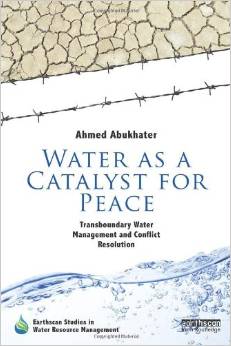Water: Abundance, Scarcity and Security in the Age of Humanity
Reviewed by Sudhirendar Sharma
by Jeremy J. Schmidt, Water: Abundance, Scarcity and Security in the Age of Humanity, SAGE, 2018, 307 pp.
Cape Town may be the first waterless city, but the fact that humans are drawing more than their fair share of water should make us shudder as things are likely to become worse before they get any better. From surplus to scarcity, human interference with global water systems has created an issue of security, requiring new ways of managing water in the age of the Anthropocene. With the idea of water stability thrown into a tailspin, there is an urgent need to define “safe operating space” for humans to work within planetary boundaries for sustaining life and life forms.
By altering planetary systems, humans have attained the status of a geological force, causing all the ways in which water management connects to geography, culture and economics to lose their relevance. Far from inducing equitable access to water across sectors, the global impact of the American approach to water management has triggered a brazen water grab not only within the local hydrological contexts, but also in regional and national contexts. Unless this prevailing approach is questioned, argues Jeremy Schmidt, inequalities, including those that exist on a geological scale, cannot be addressed.
While it should be apparent that dividing humans from nature will not help us understand our impact on natural processes, a failed attempt to reject the society/nature dualism in the past had led to an oppressive logic and enhanced the prospects of meeting certain ends rather than others. The book asks: how do conflicts over water, such as those over the right to water, gain prominence?
The trouble with a single planetary story about water, especially one tied to a techno-centric philosophy of water management, is that while it does not deny that alternatives exist, it simply posits that we can get by without them. Schmidt presents three philosophical perspectives to counter this view: first, water resources should be managed without privileging a particular cultural understanding; second, we should acknowledge that social relations take shape around different water use practices; and third, we should appreciate and acknowledge the intrinsic importance of different symbolic ends that others attach to water. These three concerns—over subjects, social relations and symbolic goods––could be critical entry points for initiating a new discourse on water management. We need this because the paradigm of “making things public” is inadequate; it fails to see that water problems are the outcome of a failed nineteenth-century solution tied to society/nature dualism. Although this argument may seem troublesome to those excited about emerging social entrepreneurship around water, Schmidt is asking us to consider the questions that arise for modernity as the result of water management practices instead of thinking about water management as the product of modernity.
Relying on volumes of historical sources, the book attempts to bridge engineering solutions and the social ideas that informed them. As we are now part of an “unfolding water drama,” the challenge for global water governance is that it has not separated itself sufficiently from the philosophy that gave rise to the problems it seeks to solve.
Schmidt does not offer a solution, but rather questions the prevailing philosophy of water, the end result of which is that water, once abundant, is now scarce. If water continues to be managed as it is at present, the majority of our rivers will only be carrying treated waste water.
Water offers refreshing new historical and philosophical insights to help rethink the prevailing (global) philosophy of water management.



